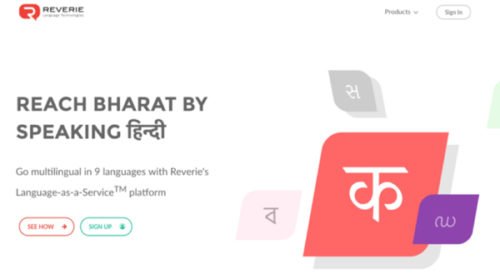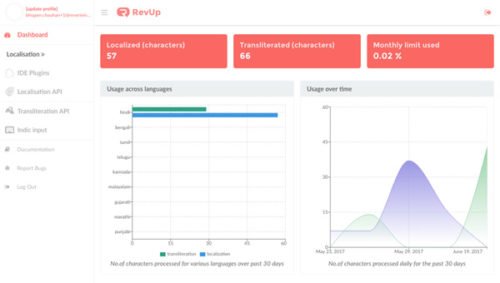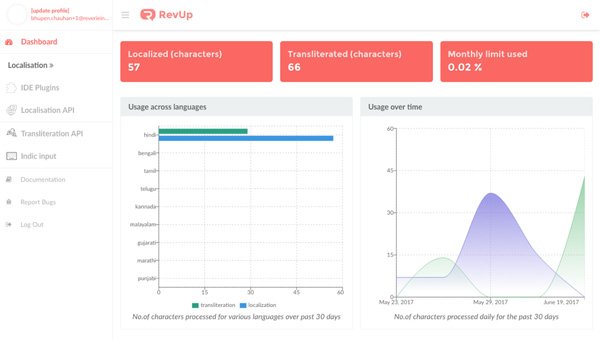India has 22 official languages, with approximately 1600 mother tongues, although the number of people speaking some of these would be a handful.
Because of the history we have had, English has become a language of class, and people who speak English are at the forefront of creating content in, no prizes for guessing – English. This reflects in the way development of apps happen in India.
In this era of mobile app ecosystems, where more content is available than what one can consume in their lifetime, segregation on the basis of Indian languages leaves the non-English educated Indians with little or no information.
How do Indian app developers perceive language support? How app localisation is still an afterthought?
Today, app developers perceive language support as a growth hack. While the thinking behind it may not be entirely wrong, as adding languages is definitely one way of increasing the target customer base, but there is a catch. Languages come as an afterthought in the app development cycle. In more than 95% of the case, an app is ready and live on Play Store. Once the growth plateaus, developers want to increase usage to increase the number of downloads. Hence, adding languages looks like a lucrative and easy path to increasing the customer base. What is missing though, is the intent to increase engagement for people who can use the app in local languages. For example: Just updating navigational content in multiple languages will not increase user base if you do not understand the other barriers to entry that exist for local language users. Apps need to be built for local language users keeping in mind engagement or their touch points.
How will a local language user onboard? If registration requires email-id, that will be a problem since many local language users will not have one, because, yes, emails are English dominant!
How will transactions be done? If the payment flow is not language agnostic, users will drop out. If cash on delivery is not an option built in for local language users, it will discourage new users from completing transactions and trying out the benefits of the website/mobile app ecosystem that we take for granted today.
How is the BHIM app India’s truly transactional app as it was built with a language infrastructure?
The Bharat Interface for Money (BHIM) app which has been localized by Reverie is a good example of an app built by keeping languages in mind from the beginning. Reverie was involved with the product team from the day the development cycle began. In terms of user onboarding, first, it requires users to choose their preferred language. Second, the authentication is done with just your phone number which is the lowest common denominator available to Indians. Third, navigation is simple and is not a hindrance for local language users.
Why did Reverie build the LaaS Platform?
LaaS (Language as a Service™) platform was built to help developers build apps in local languages in parallel with English, if not first. The experience of helping previous businesses like Snapdeal, Ola, Hungama, Quikr, Practo, and our interaction with developers and product managers who wanted to go multilingual came in handy while designing our platform. Building a delivery platform for localisation to service this audience of technically savvy helped them ‘see’ how easy it was to localize and familiarize themselves with tools that they could easily apply during their build process.

What is Reverie’s LaaS platform?
The platform offers tools that help developers and product managers make their app multilingual. Here are the tools Reverie provides:

Tools available on the LaaS™ platform for developers and product managers
- Transliteration, is the phonetic conversion from one script to another. It is useful when trying to show display proper nouns, such as addresses, names etc.
Example: For a cab aggregator, onboarding drivers with their preferred local language becomes easy if they are able to show the pickup address and the name of passenger in a language of their choice.
- Indic Input, this is an input plugin that offers developers easy integration of typing options on their web platform. Even though people want to communicate in the language of their choice, there are not many tools or web keyboards that allow users to create content in local languages easily. Indic Input was made with them in mind.
- (Beta) IDE Plugin, takes care of localizing the navigational content. It offers one click localization for menu items. Though in beta, it eases the effort of manually converting strings.xml files in multiple languages. This is a very popular tool amongst Android developers who build native Android apps.
- (Beta) Localization, as the name suggests converts content via translation based on specific domains such as ecommerce, banking etc. A word or a phrase can have different meanings based on which domain or context it is used in.
How does the LaaS Platform support end to end User Experience?
Besides delivering translation and transliteration APIs on the LaaS™ platform showcased above, we actively hand hold developers during their build cycle with questions related to fonts or guide them on certain design elements. For example – designing to accommodate the Indic language requirements of vertical and horizontal space – did you know a Malayalam equivalent of an English word can take 2-3x of space? Our guide on best practices for app developers was in fact part of the popular handbook for developers – ‘Developer’s Compass to the App Galaxy’.
Making Languages Work for App Developers






